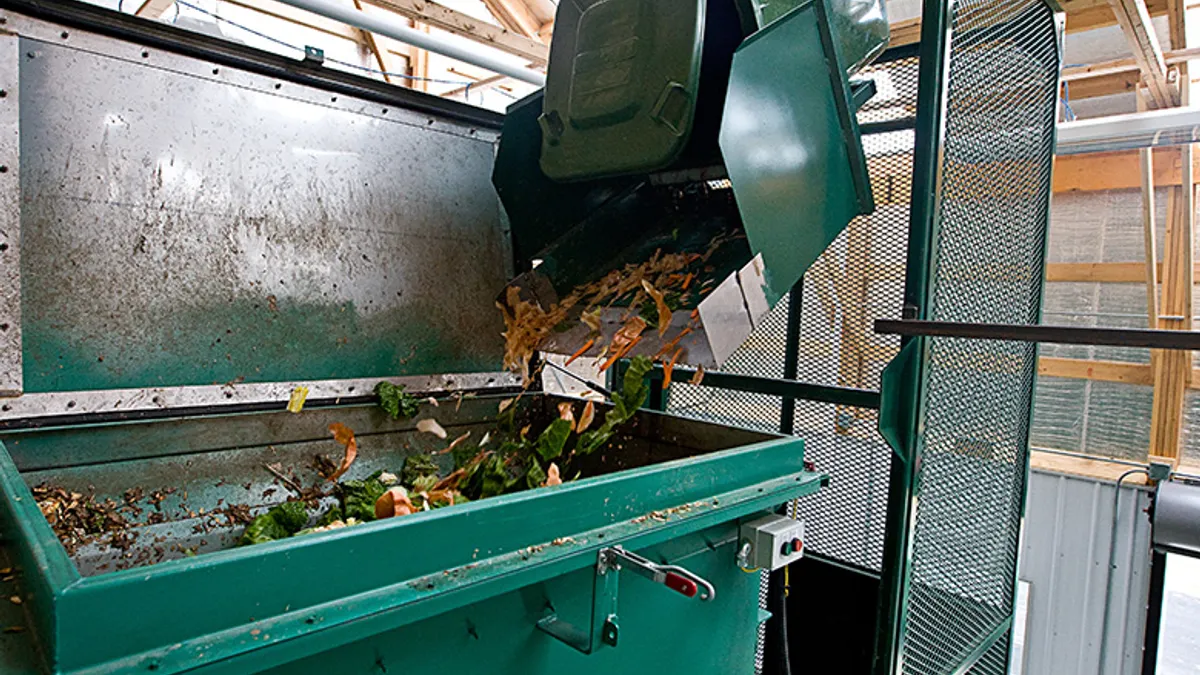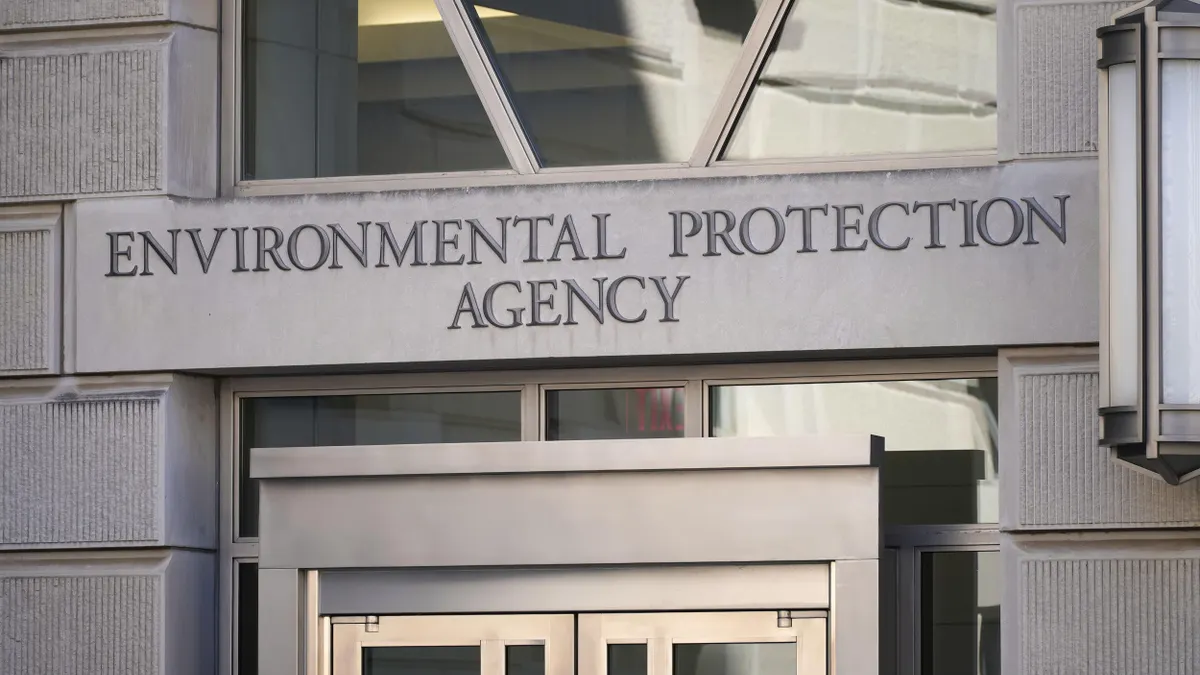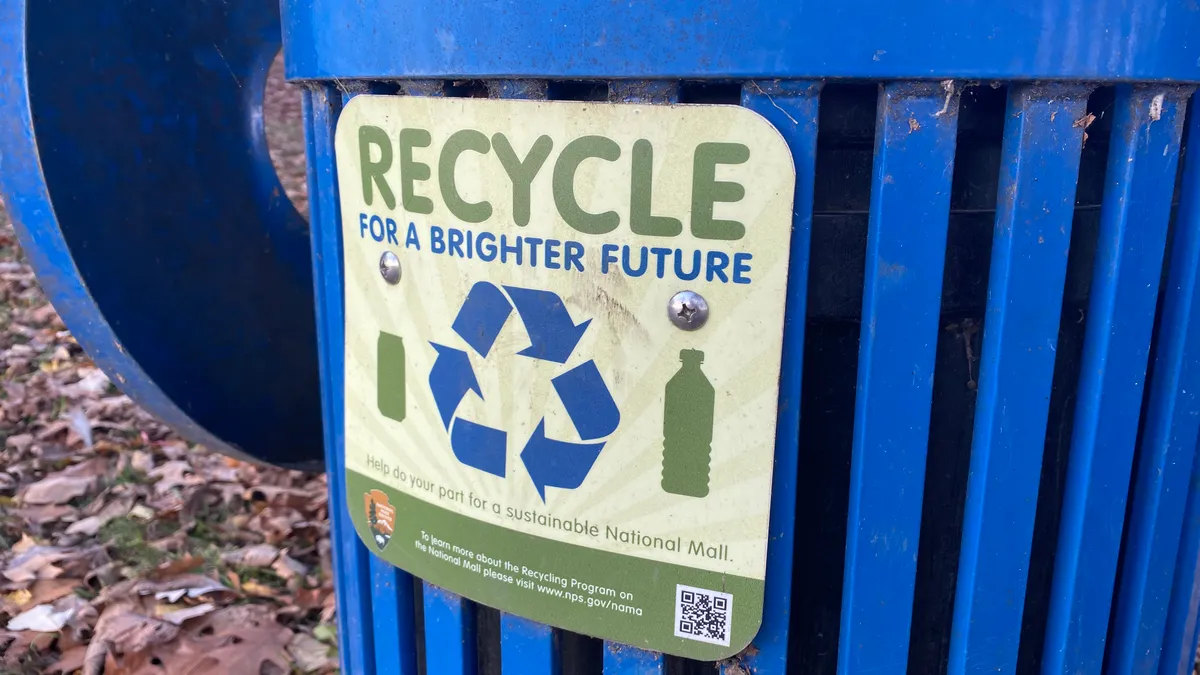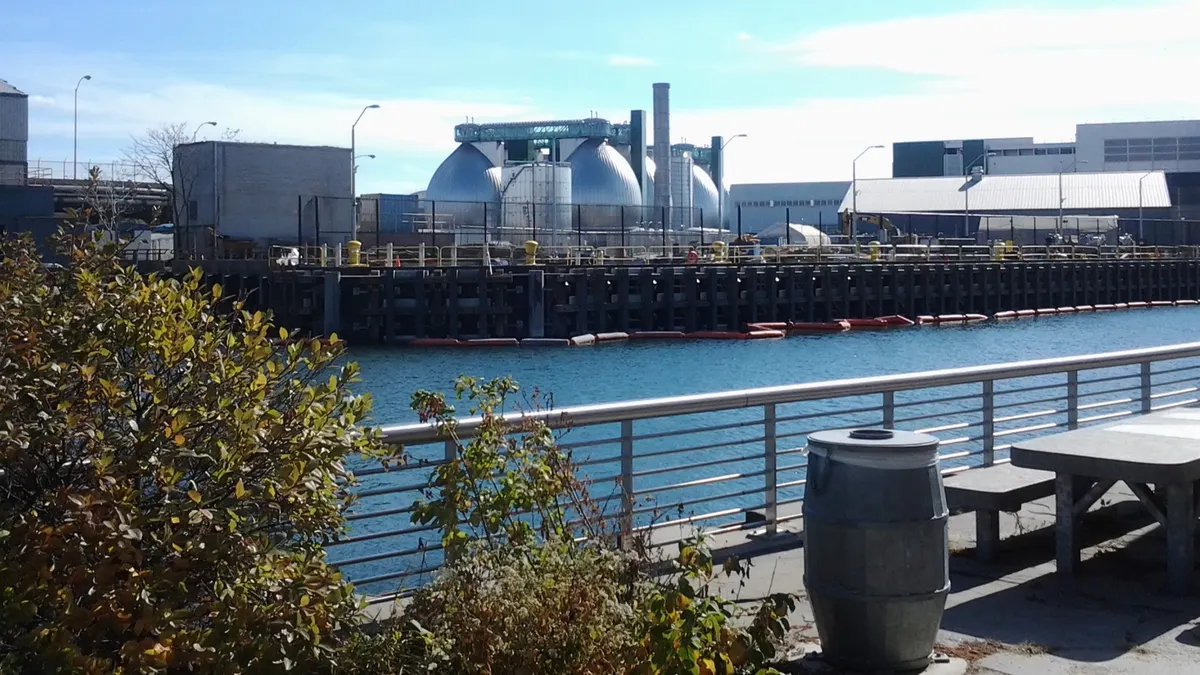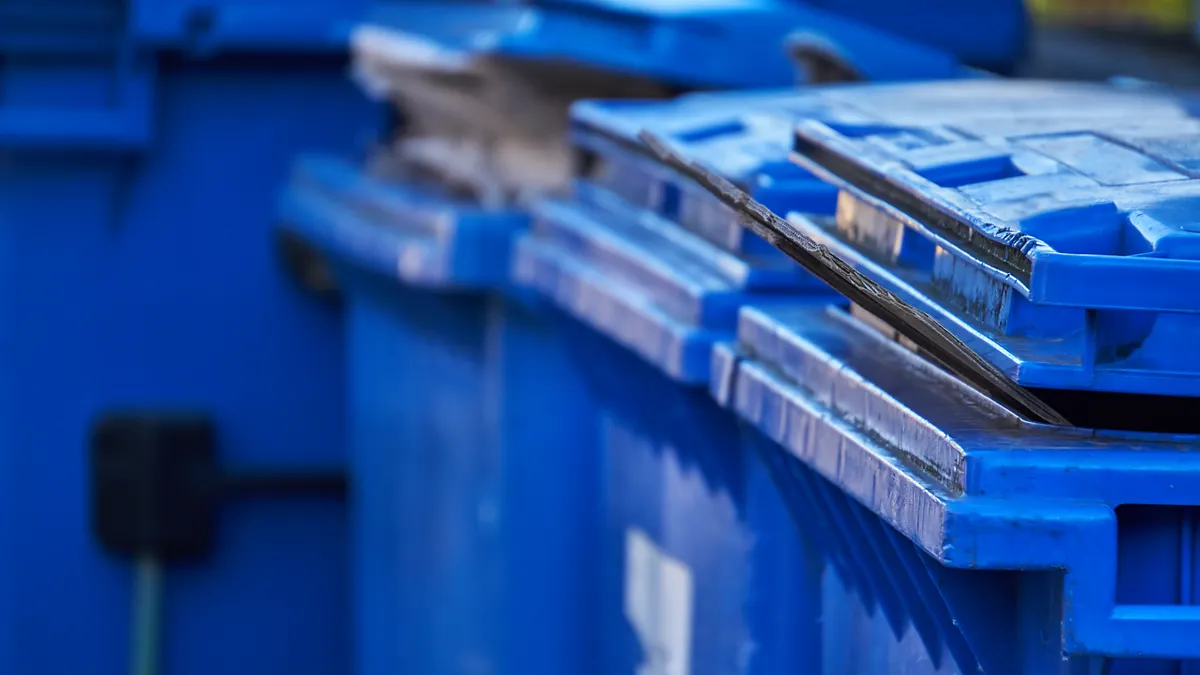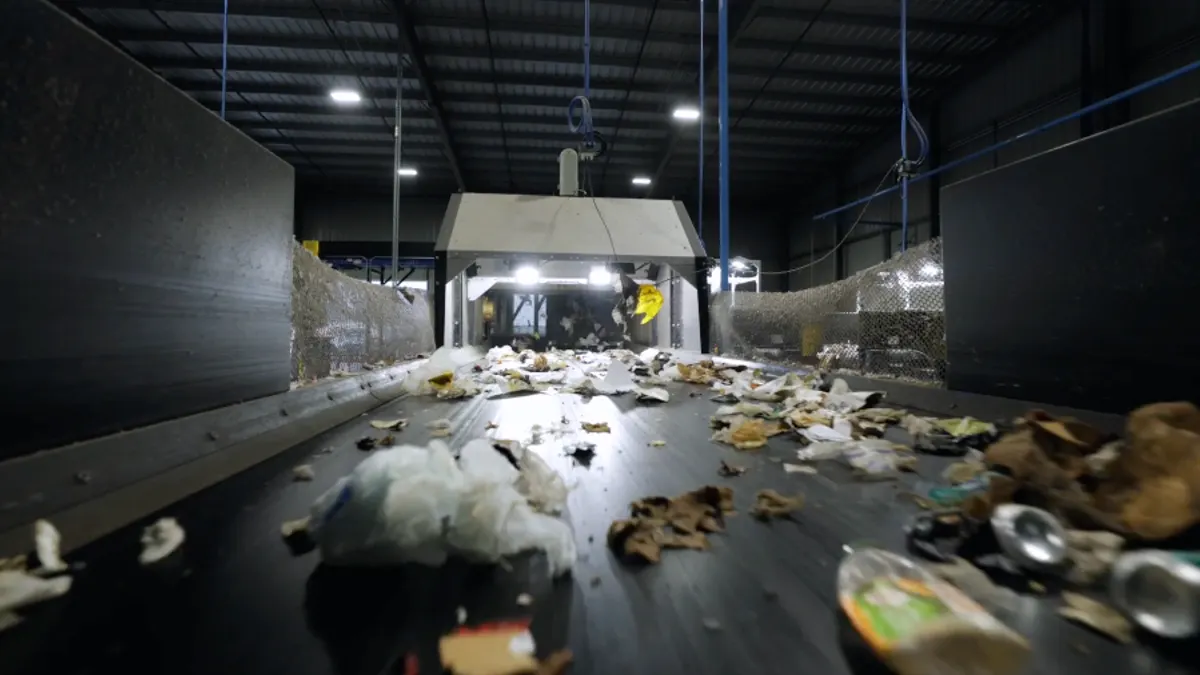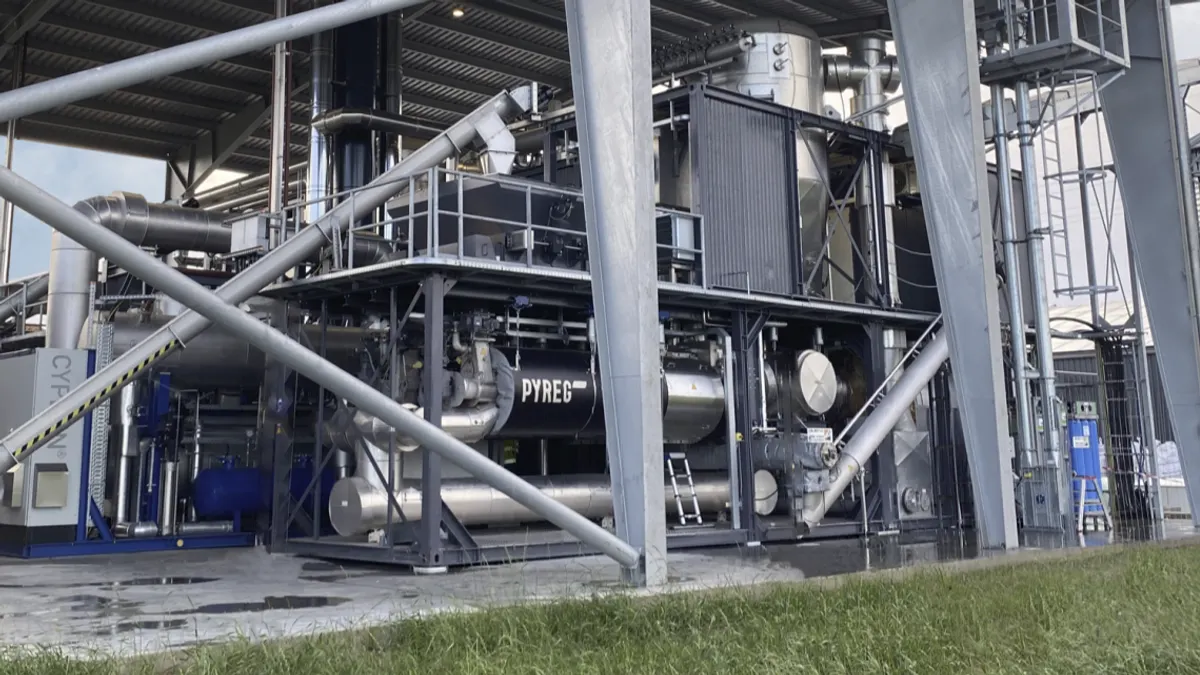Ohio University processes more than five tons of food waste every day, turning the scraps left over from hungry college students at the school’s cafeterias into “brown gold” — compost that the university uses to fertilize plants around the campus and sell to neighbors.
In most dining halls, any leftover food is placed on a conveyor belt where an employee from the school’s Culinary Services department separates the contents into food waste, landfill waste and recyclable waste. This collection process allows the university to compost nearly 100% of food waste from campus dining halls and its central food facility, according to a recent blog post.
“Basically, it's completely circular in that we take that food waste out of the earth, we process it, we make a soil amendment and then we return it to our grounds,” Sam Crowl, director of sustainability at Ohio University, said in an interview.
Compost bins are collected, five days a week, and taken to the school’s Ohio facility, which is co-managed by the school’s facilities management team and the Office of Sustainability. The facility contains two-ton and four-ton in-vessel systems from Wright Environmental Management. The university says this helps to ensure the recycling process is effective by churning out quality soil while also limiting any chance of methane-producing bacteria.
After adding in wood chips to create a chemically balanced mixture, the compost is turned and heated to further the decomposition process. “We have a chipper so we’re able to produce some of our own wood chips, but we also have to purchase [some]. So that’s an expense,” Crowl said.
After two weeks in the vessel, the material is taken outside to be cured in outdoor windrow, for 90 to 180 days, that are turned by tractor.
“The vast majority of the product that the system produces is returned to our campus grounds. It goes into our landscape beds. It is used anywhere we want to provide nutrients, so we put it around our trees,” Crowl said. In addition, the compost is provided to community gardens through partnerships with local schools and other departments on campuses.
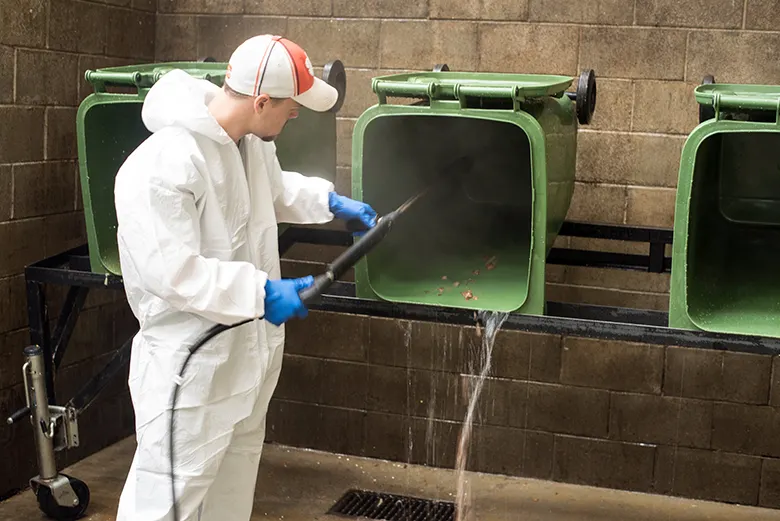
“So it’s available internally to university partners, and then also it’s available externally. We do have a process where community members or small local farmers can purchase the product,” Crowl said. “We don't really do a lot of marketing or advertising of that, so it's not a huge part of our economics, or how we support the system. But it is available, and it is sold locally.”
Once compost bins are dropped off at the facility, which features a specialized solar-thermal system, waste oil burner and plastic skylights for heating the building, the bins are set up on a rack and power washed with water from a rainwater collection system so that they can be reused.
The problem with kids — and teachers — these days
The compost bins can also be found at the university’s central food facility in Athens, Ohio, as well as various offices and even some resident halls via an opt-in program. While the system has been operating pretty seamlessly since it began in 2009, the university did run into a challenge when attempting to expand the system to include waste from its student union’s food court: the public.
Compost facilities in Ohio are rate limited by the Ohio Environmental Protection Agency, which examines the facility once a year to make sure that no leaks are contaminating the groundwater supply or nearby streams.
“Our biggest challenge has been contamination of the water stream,” Crowl said. Despite many attempts over a year and a half to improve signage at the public food court, properly separating food waste from landfill waste and recyclable waste “was something that the public just couldn’t really handle,” he said.
After running an internal audit and examining the situation, Crowl realized that it wasn’t just students failing to separate garbage from food waste, it was “a wide spectrum of different people who were incorrectly putting items in the wrong place.”
While the school’s cafeterias have employees for separating materials, it doesn’t have the staff to go through each bin to make sure they are completely clean of non-food waste. “There was so much contamination coming out of the student union that they couldn’t get it all, and the Ohio EPA came up for their annual inspection and there were potato chip bags, or plastic lids and utensils, in the compost,” according to Crowl.
“They said, ‘Look, you have to clean this up or we are not going to be able to give you your permit this year.’ It was a small fraction of the overall sort, but I can understand their concerns,” he said. “And so the only way, after we tried different signage and instructions, we could really solve that problem was by not having a compost collection effort at the student union.”
Now that the university stopped collecting from the union, it no longer has any more problems keeping compost clean, Crowl said.



